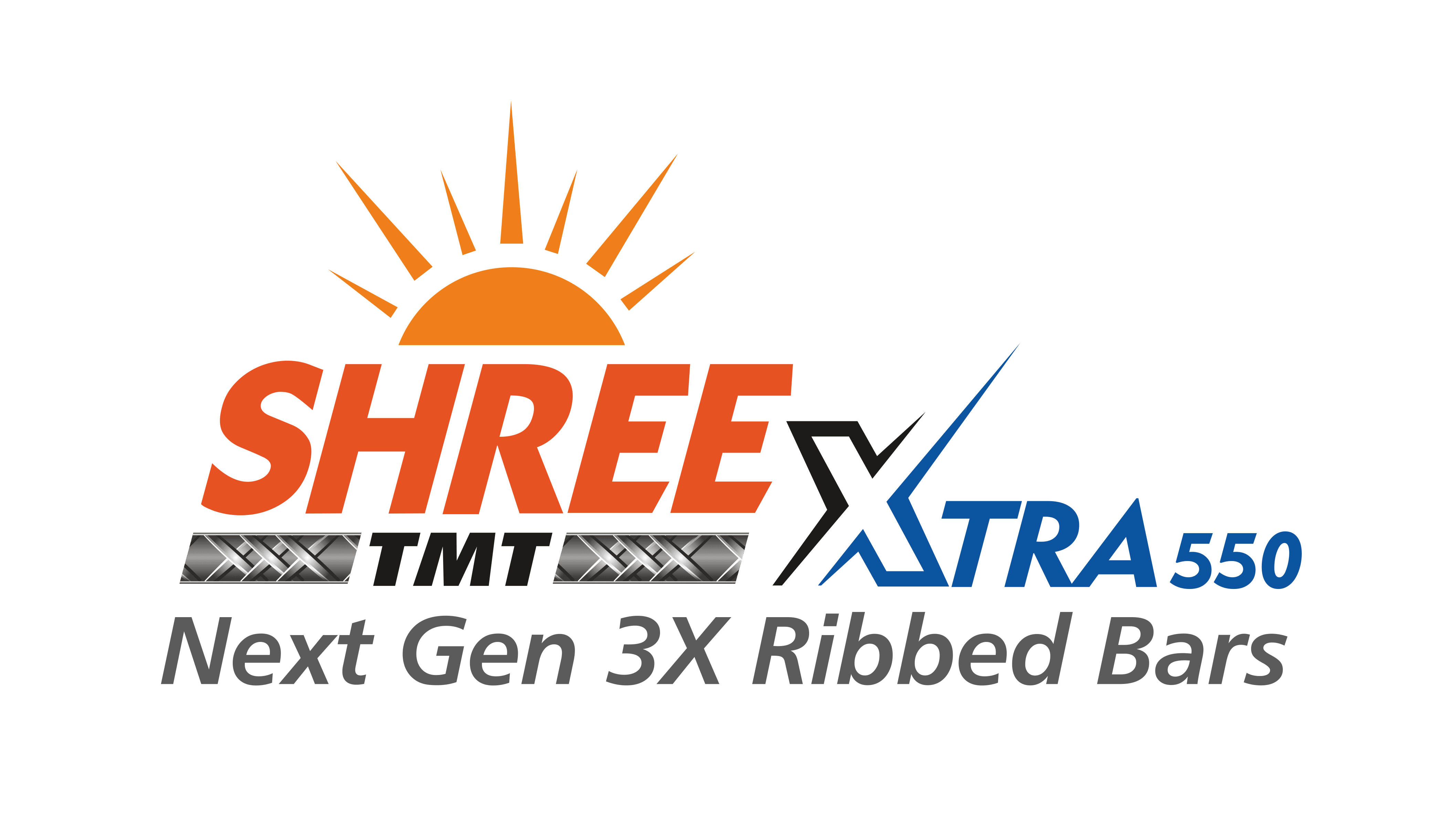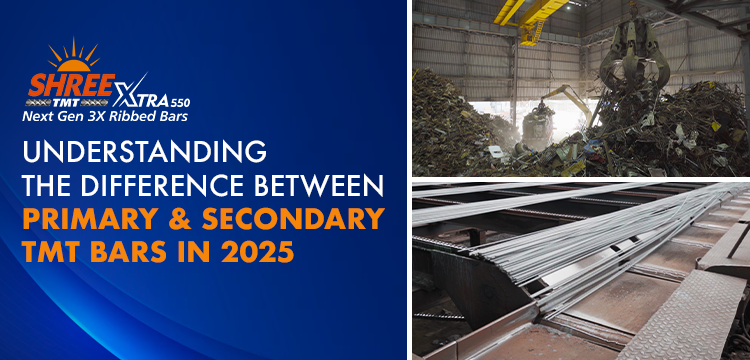Understanding the DifferenceBetween Primary and SecondaryTMT Bars in 2025
In the construction industry, the quality of Thermo-Mechanically Treated (TMT) steel bars plays a crucial role in determining the strength, durability, and safety of structures. As construction technology evolves, it’s essential for builders, engineers, and homeowners to understand the key differences between primary and secondary TMT bars, particularly in the 2025 construction landscape.
Primary TMT Bars: The Traditional Approach
Primary TMT bars are manufactured using iron ore as the primary raw material. This traditional manufacturing process involves:
- Ore to Steel Conversion: Iron ore is smelted in blast furnaces to produce molten iron.
- Refining Process: The molten iron undergoes refining in basic oxygen furnaces to produce steel.
- Rolling and Treatment: The steel is then rolled and subjected to the thermo-mechanical treatment process.
Secondary TMT Bars: The Recycling Revolution
Secondary TMT bars are manufactured using recycled steel rather than iron ore. This approach has gained significant traction due to sustainability concerns and resource conservation efforts. The process includes:
- Scrap Collection: Various types of steel scrap are collected and sorted.
- Electric Arc Furnace (EAF) Melting: The scrap is melted in electric arc furnaces.
- Refining and Rolling: The molten steel undergoes refining before being rolled and thermo-mechanically treated.
While the recycling approach is environmentally friendly, the quality of secondary TMT bars can vary based on the scrap input quality. This is where manufacturers like Shree TMT have made significant advancements, implementing rigorous quality control measures to ensure consistency.
Key Differences in 2025
Raw Material Source
- Primary: Primary TMT bars utilize virgin iron ore extracted from mines, which requires extensive processing to convert to steel.
- Secondary: Secondary TMT bars are produced from recycled steel, giving new life to previously used steel products and reducing waste.
Manufacturing Process
- Primary: The manufacturing of primary TMT bars follows a longer production chain that begins with blast furnaces for iron extraction, continues through basic oxygen furnaces for steel making, and concludes with the rolling mill process.
- Secondary: Secondary TMT production employs a more direct approach using electric arc furnaces to melt the collected scrap, followed by the rolling mill process, which typically requires less energy and fewer steps.
Environmental Impact
- Primary: The production of primary TMT bars generates a significantly higher carbon footprint due to ore extraction, transportation, and the energy-intensive smelting process that consumes substantial natural resources.
- Secondary: Secondary TMT manufacturing substantially reduces the environmental burden by utilizing existing materials, consuming less energy, and supporting a circular economy model that extends the lifecycle of steel.
Quality Considerations
- Primary: Primary TMT bars follow conventional production methods that, while reliable, lack the advanced technological scrutiny and testing protocols that have been developed specifically for modern secondary steel production.
- Secondary: Secondary TMT bars benefit from cutting-edge manufacturing technologies and rigorous quality control systems that enable premium manufacturers like Shree TMT to produce bars with precisely engineered properties that consistently meet or exceed industry standards, often with enhanced adaptability to specific construction requirements.
Choosing the Right TMT Bars for Your Project
When selecting TMT bars for construction in 2025, consider these factors:
- Structural Requirements: Both types can meet BIS standards when properly manufactured.
- Environmental Goals: Secondary TMT bars offer significant sustainability advantages.
- Manufacturer Reputation: Choose established manufacturers with proven quality control systems.
The Shree TMT Advantage
In the secondary TMT bar market, not all manufacturers maintain the same standards. Shree TMT has distinguished itself by implementing advanced technologies and stringent quality control measures that address the inherent challenges of secondary steel production.
Their process includes:
- Ultra-precise scrap sorting and cleaning technologies
- Advanced impurity detection systems
- Strict chemical composition monitoring
- Comprehensive mechanical property testing
By controlling every aspect of the manufacturing process, Shree TMT ensures that their secondary TMT bars deliver performance on par with primary options while maintaining the environmental and cost benefits of recycled steel.
Conclusion
As construction practices evolve in 2025, the choice between primary and secondary TMT bars no longer needs to involve compromises on quality. With manufacturers like Shree TMT setting new standards in secondary steel production, builders can confidently choose environmentally responsible options without sacrificing structural integrity. The key is selecting manufacturers who demonstrate an unwavering commitment to quality throughout the production process.

